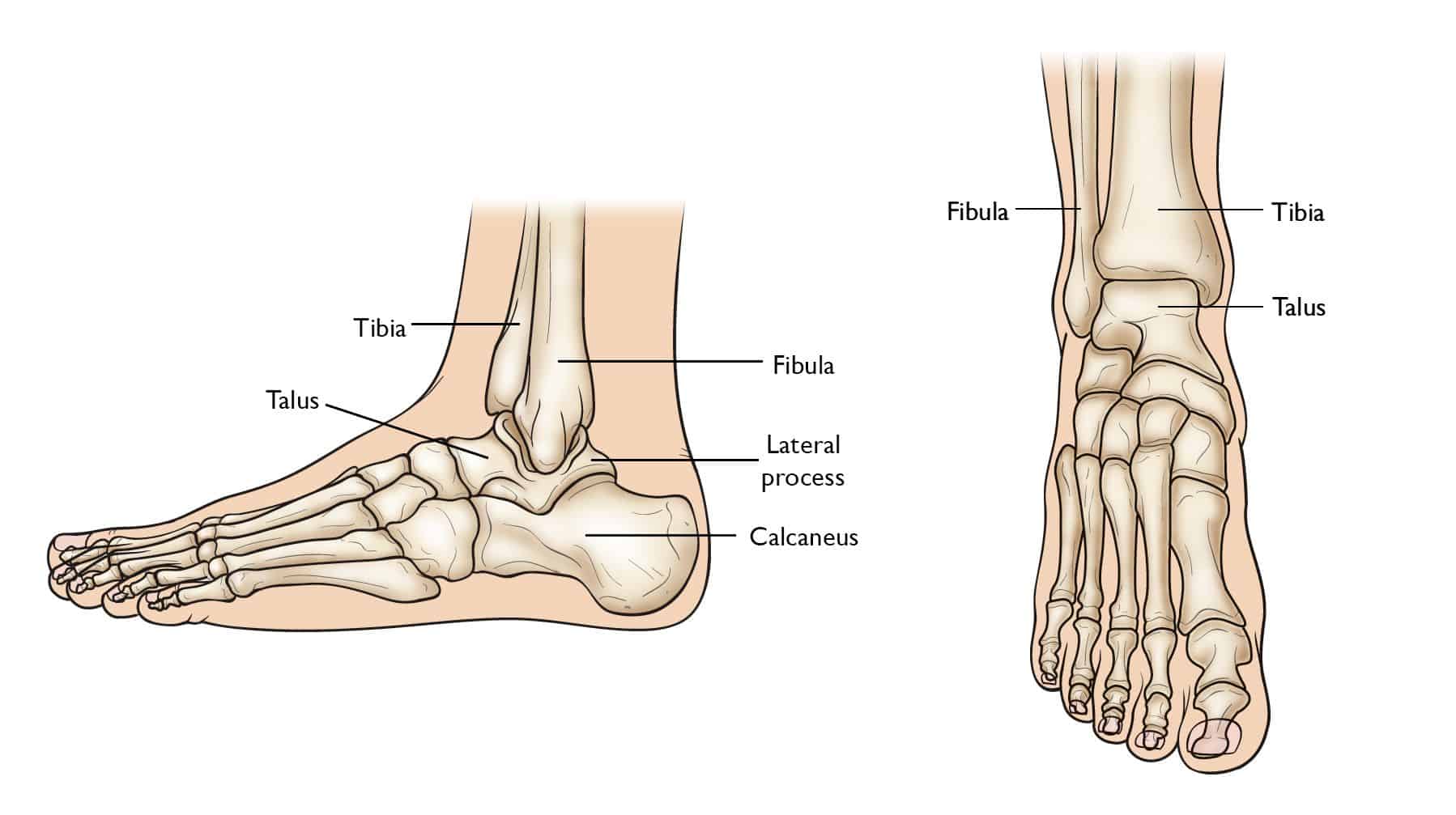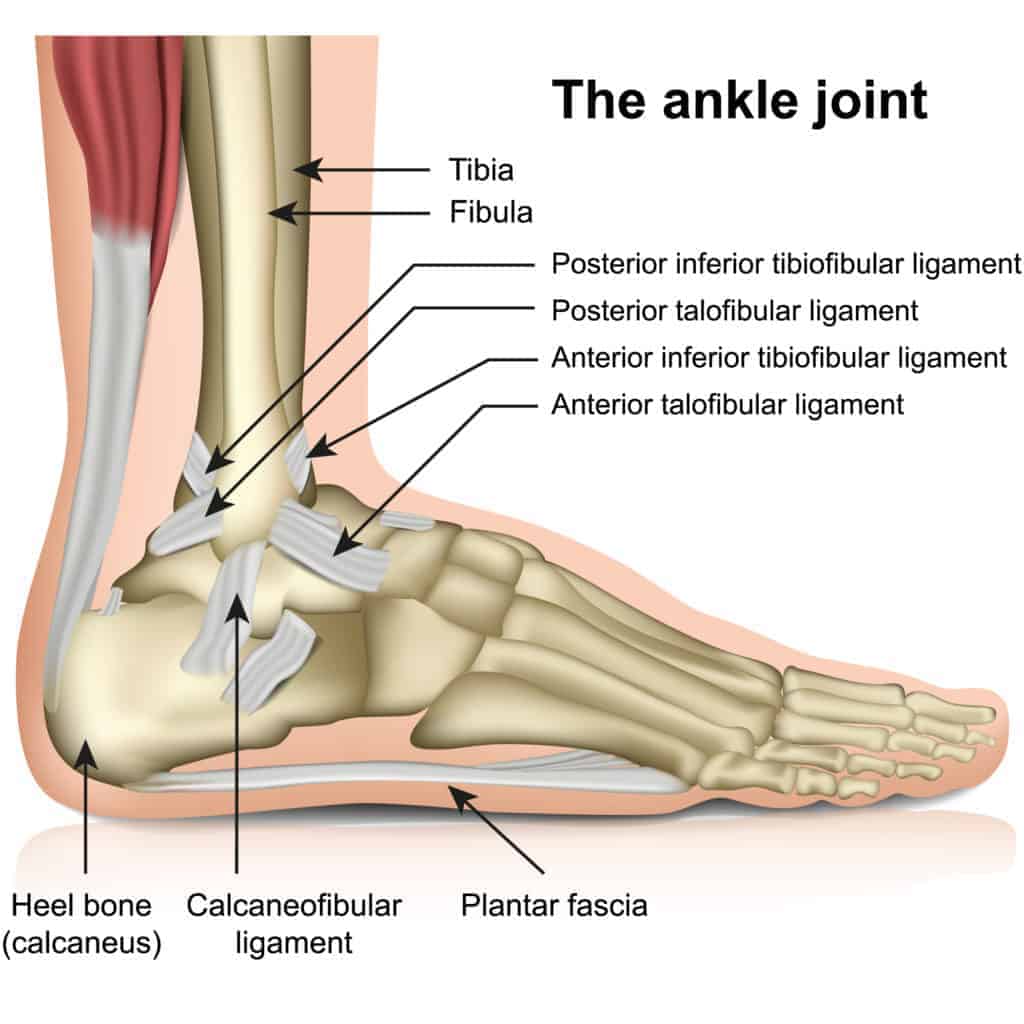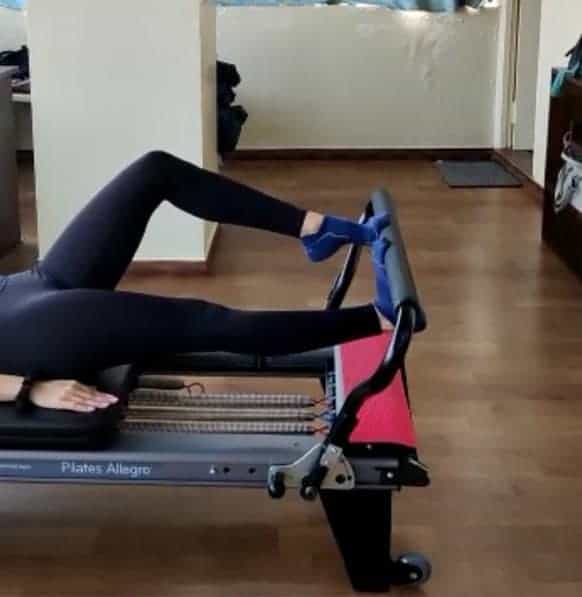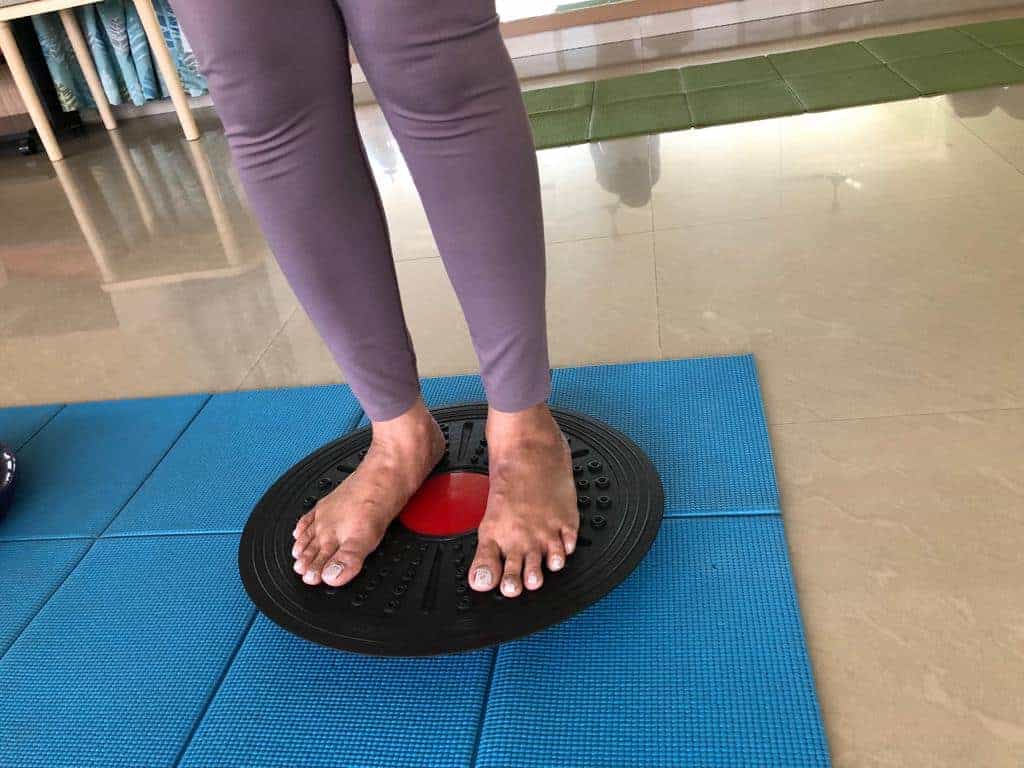Basics of Anatomy: Ankle Joint

Here’s a fun fact: Out of 206 bones in your body, 26 are part of one foot alone. Together, both feet comprise 25% of the bones of the body. Not only that, 33 joints in the foot must work together with 19 muscles and over 100 ligaments to execute highly precise movements while we are standing and performing any movement on our two legs. In this blog, we will discuss the most important joint of the foot which transmits the weight of the entire body and distributes it in the foot, the ankle.
Anatomy of the Ankle
Our foot is divided into three sections:
- The forefoot contains the five toes (phalanges) and the five longer bones (metatarsals).
- The midfoot is a pyramid-like collection of bones that form the arches of the feet. These include the three cuneiform bones, the cuboid bone, and the navicular bone.
- The hindfoot forms the heel and ankle. The talus bone supports the leg bones forming the ankle. The calcaneus (heel bone) is the largest bone in the foot.
Muscles, tendons, and ligaments run along the surfaces of the feet, allowing the complex movements needed for motion and balance. The Achilles tendon connects the heel to the calf muscle and is essential for running, jumping, and standing on the toes.
The ankle joint, also known as the talocrural joint, is a synovial joint that connects the bones of the leg, the fibula and tibia, with the talus bone of the foot. It is a complex hinge joint composed of three articulations.
The tibia and fibula form a bracket shaped socket on their lower surfaces which is known as a mortise. The upper surface of the talus fits snugly into the mortise.

The ankle joint capsule is relatively weak and thin, but it is reinforced by strong collateral ligaments. The medial ligament of the ankle is the strongest ligaments in the body and it does not injure easily. However, the lateral ligaments can tear or sprain easily by any kind of torsion at the ankle during walking, running, or in contact sports.
Function
Our feet are flexible structures that adapt to the surface on which we walk, hence they are crucial in the gait cycle. They help us perform activities like standing, walking, running, and jumping.
Apart from that, the foot and ankle joints are important for proprioception and balance. They give us feedback as to our position in space.
Most of the movements of the ankle joint take place in a multiplanar direction. These movements are plantarflexion (pointing of the foot), dorsiflexion (flexing of the foot), eversion, inversion, supination, and pronation.
Dysfunction
The ankle joint is the most prone to sprains and injuries. An ankle sprain refers to partial or complete tears in the ligaments of the ankle joint. It usually occurs due to excessive inversion to a plantarflexed and weight-bearing foot (on-toes). Sprains can be of two types viz. due to twisting of the ankle on uneven surfaces or due to contact sports like football etc.
Fractures can also occur in the metatarsal and calcaneus bones either from injury or repetitive use.
Pilates for the ankle
The most important practice for protecting the ankle is the right footwear. Wear footwear that supports the ankle and try to avoid heels as much as possible.
Pilates can work on gradually building the strength of the ankle joint. Starting from closed chain to open chain and balance challenges, Pilates exercises will strengthen the small muscles in the foot and ankle.
The first step would be to mobilise the ankle. You can do standing heel raises, which mobilise the joint work on the calf muscles.
Then, to load the muscles, we do leg work with the theraband. Leg work on the reformer is also good for this. It is the basic warm-up we do before any reformer class at Moushu’s Pilates.

The next step is to challenge the balance to improve proprioception. So exercise can be done on the wobble board, the bosu and the foam roller. Single leg exercises also help in building the strength of the muscles, while working on balance.

And finally, moving to jump landing type exercises like jump work on the reformer, help in functional training.
Changing the surface on which one works out helps the ankle to adapt easily when we are out walking on uneven surfaces. Thus, walking on sand can also help. Additionally, it is important to work on strengthening and aligning the hip, knee, and ankle together, as they are intrinsically linked.
Watch this video for some leg work exercises:
To know more about the different joints, their muscles, and their functions, check out the Wonders of Anatomy and Movement Series. It is a certification under Moushu’s Pilates Education.
This blog was written under the guidance of Hemakshi Basu.
